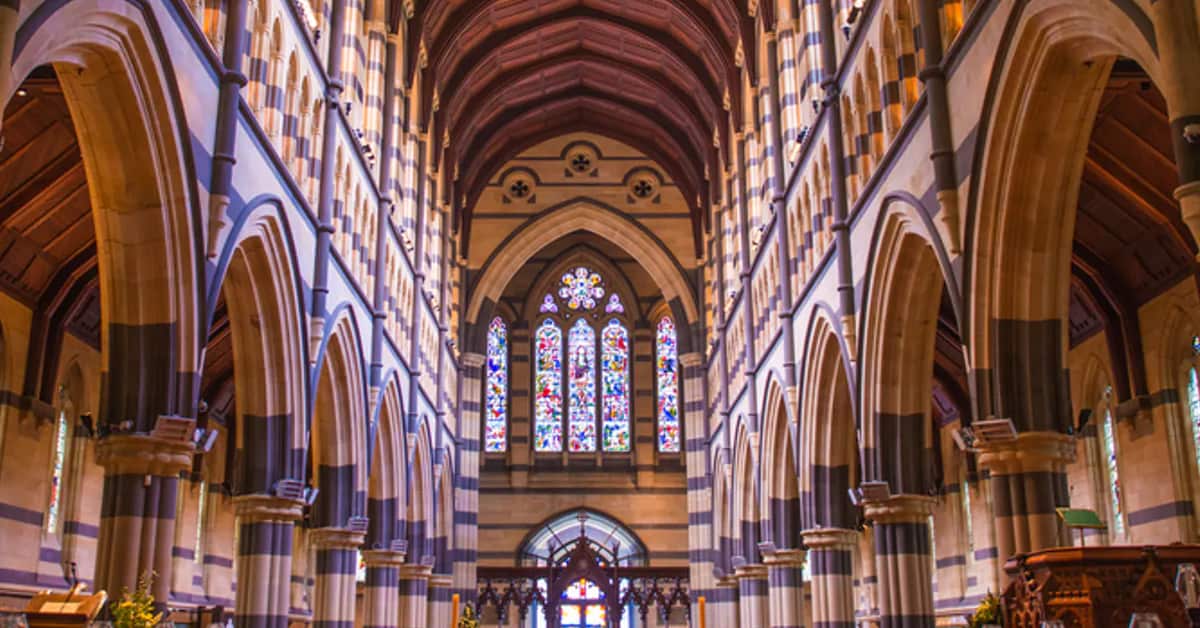
Anglicanism as we think of it today is essentially a nineteenth-century invention. The elements that make it up are much older than that, of course, but it was only from the 1830s or so that the particular configuration that Christianity assumed in the post-Reformation Church of England and its sister churches came to be regarded as something unique. Before that time, most people assumed that the Church of England was a Protestant body that had separated from Rome in the sixteenth century along with several other churches in Northern Europe. Everyone knew that the details of the separation were unusual, and that political factors had played as much of a role as theological ones, but these secondary matters did not affect the basic principle. The English church happened to have preserved a number of medieval features, like a territorial episcopate with cathedrals that continued to function much as they had before the Reformation. This gave it a certain traditionalist feel, which might look to Protestants like remnants of Roman Catholicism, but this was more in appearance than in reality. Almost all members of the Church of England saw themselves as Protestants and regarded Rome with varying degrees of enmity.
It was only when secularism began to take hold, and the bonds of church and state started to weaken, that people began to ask about the nature of the Church of England. Was it a Protestant church with distinctive characteristics or a Catholic church no longer in communion with Rome? That, in turn, raised the question of what catholicity is. Rome was quite clear that to be Catholic meant being in communion with the Holy See and accepting the pope as head of the church on earth, the vicar of Christ. English churchmen could not agree with that, and some of them pointed to the Eastern Orthodox churches, which were just as ancient as Rome but had not been in communion with it for eight hundred years. Could the Church of England claim a similar kind of non-Roman catholicity? Those who thought that it could were the first to use the term “Anglicanism.”
For these first self-conscious Anglicans, Protestantism and the Reformation were a problem. Their impact on the Church of England could hardly be denied altogether, but the theorists of Anglicanism tended to minimize their significance. They agreed that the late medieval church needed reforming, but they claimed that in England, existing abuses were corrected but no new doctrines or practices were introduced. Anglicanism was thus understood to be a kind of reformed Catholicism, better than what Rome had to offer, but not really different from what had gone before. In order to substantiate that argument, they were forced to overlook much of what happened in the sixteenth century and restrict the word Anglican to those who opposed the Puritans, whom they regarded as an alien import into the English church. As they saw it, the Puritans were eventually defeated and the Church of England was able to express its true Anglican identity.
This interpretation of English church history might have been dismissed as eccentric had it not coincided with another development that made it convenient to promote Anglicanism as a distinct form of Christianity. This was the expansion of English Christianity to other parts of the world, which took different forms. Ireland and even Scotland (for a while) had national churches that were in communion with the Church of England, though they did not refer to themselves as “Anglican” until modern times because they did not see themselves as being English. Colonial settlers took the English church to North America, Australasia, and other parts of the world, and at first were quite happy, even determined, to call themselves “English.” But as they became independent of the mother country some other designation was called for and eventually “Anglican” met this need. Beyond the settler churches, members of the Church of England planted missions across the globe, whose converts were in no sense “English.” For them it was pointless to try to re-create the Church of England in Africa or Asia, but they could not easily deny their origins. Was it possible to establish local churches in other countries that would look like the mother Church of England and be in communion with it? Could these churches be Anglican without being English?
These questions have been addressed and answered in different ways. In some places, like India, Anglican missions have joined in with other Protestants and created national churches of their own. Whether these churches are Anglican or not has been a matter of considerable discussion. In the ecumenical climate of our time, they are usually recognized as such, though their interdenominational origin gives them a character that is distinct from that of other Anglican churches that have not joined a wider ecumenical union. In most parts of the world, however, Anglican churches have preferred to retain their distinctiveness even to the point of refusing to join interdenominational groupings. For them, defining Anglicanism is an essential part of their identity, even though that identity may have little to do with the historical English church.
More recently, splits within the American Episcopal Church have created a situation in which breakaway groups are more likely to call themselves “Anglican” as distinct from “Episcopalian,” the assumption presumably being that “Anglican” indicates a form of Episcopalianism that is more authentic, more universal, and more orthodox, but not necessarily more English. In the Church of England, by way of contrast, there are parishioners who would never describe themselves as Anglican and who may not know what the term means. They are aware that the Church of England is different from other denominations, but most of them have little idea of what Anglicanism is and are not particularly interested in finding out. Their conception of what a church should be is determined by their parish, which may or may not be typical of what exists elsewhere. Many congregants will be aware of that diversity but have chosen to worship where they do because their parish reflects what they think the church should be like. The breadth of Anglicanism may thus be something of which they are conscious but of which they disapprove for different reasons and to varying degrees. To their minds, what they do (or prefer) is what Anglicanism ought to be, and often they are quite prepared to ignore, criticize, or even condemn those who do not conform to their chosen paradigm.
Given this situation, we must accept that however “Anglicanism” is defined, it has emerged in a particular historical context, it embraces different and sometimes conflicting perspectives, and many people who subscribe to it have a narrower view of what it is (or should be) than outside observers often do. The truth is, many Anglicans find it difficult to live alongside others who claim the same denominational label but interpret it very differently, and they are often inclined to define their church in ways that implicitly, if not explicitly, exclude those who do not share their perspective. There is no easy way around this problem, and no definition of Anglicanism that will satisfy everyone. The best we can do is revisit the history, try to understand how we arrived where we are, and ask ourselves whether some theological trajectories are more consistent and more faithful to the ongoing Anglican tradition than others are.
This post was adapted from Anglicanism: A Reformed Catholic Tradition by Gerald Bray (Lexham Press, 2021).







